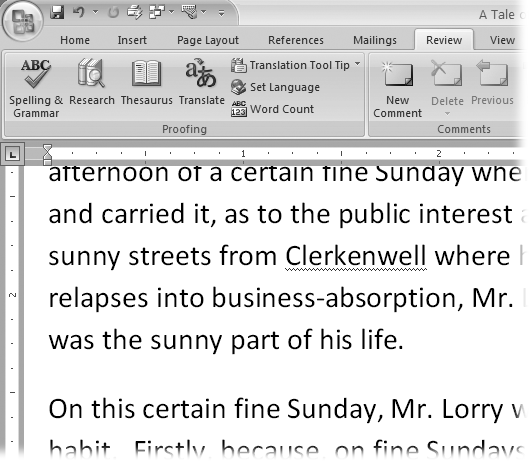Chapter 6. SPELLING, GRAMMAR, AND REFERENCE TOOLS
WHEN YOU’VE WORKED FOR HOURS on a resumé or a report, the last thing you want to do is send it out with goofs. Word’s spelling and grammar tools help you avoid that kind of embarrassment. In this chapter, you’ll learn how to use these tools. You’ll also get a clear understanding of when and how Word makes automatic changes to your text. Even more important, you’ll learn how to set up these tools to work the way you like to work.
If you really want to sound smart, Word can help you with some extra research, giving you access to a comprehensive Web-based reference library, including dictionary, encyclopedia, thesaurus, Web search, and language translation tools (Figure 6-1).

Figure 6-1. Access to Word’s Spelling and Grammar checker is on the Review → Proofing group, along with the thesaurus, the translation tool, and a slew of Web-based research tools.
Turning on Spelling and Grammar Checking
Spelling errors make any document look unprofessional, so ignoring Word’s spell checker is just plain silly. And while grammar and style are largely subjective, the grammar-checking tool can help you spot glaring errors (like mixing up “it’s” and “its”). When Microsoft first added these tools to Word, some people resented the intrusion, as discussed in the box on Section 6.2.1. The fact is, you’re in control. You can choose whether you want Word to ...
Get Word 2007 for Starters: The Missing Manual now with the O’Reilly learning platform.
O’Reilly members experience books, live events, courses curated by job role, and more from O’Reilly and nearly 200 top publishers.

